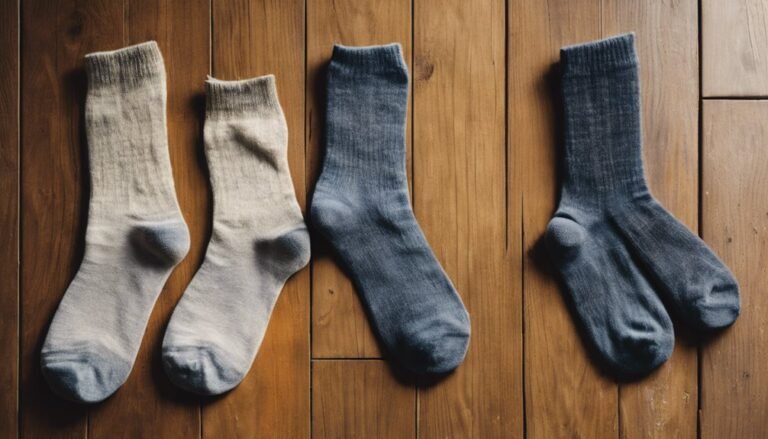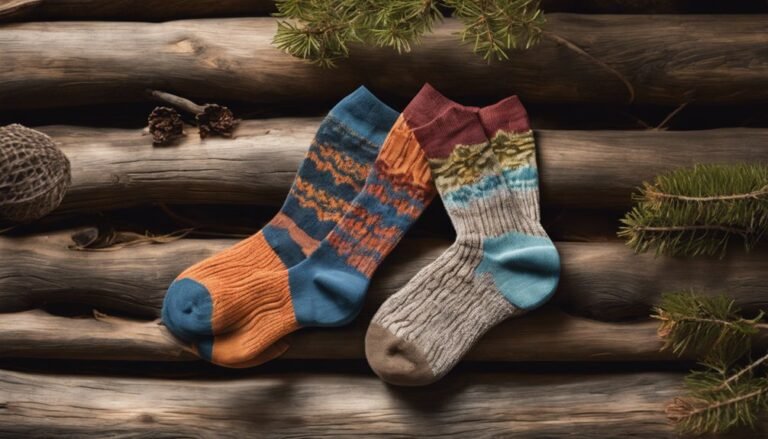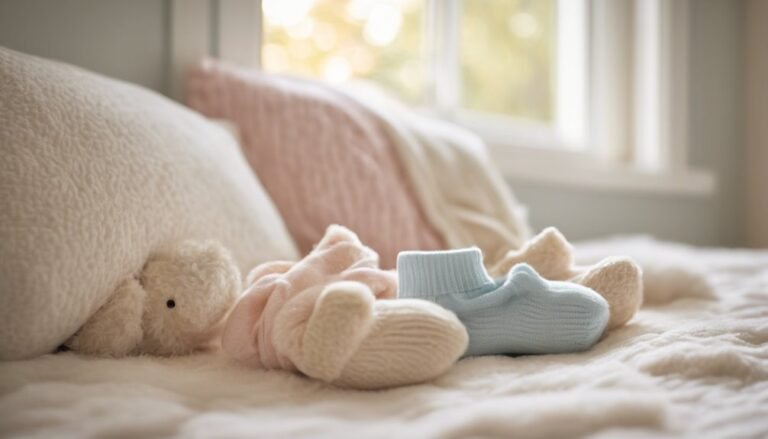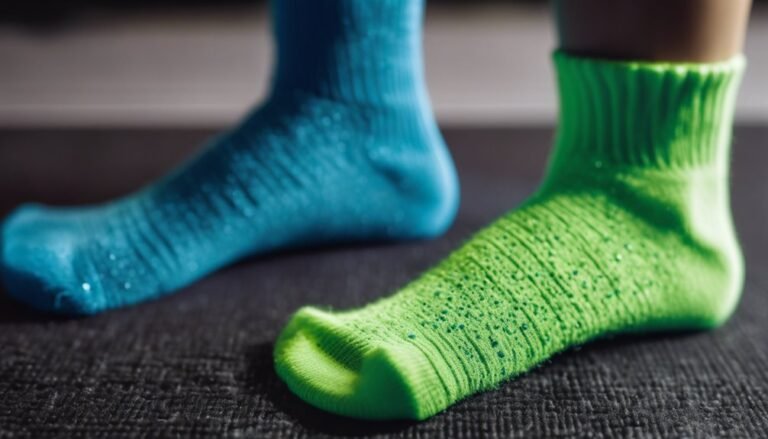The Technology Behind Anti-Blister Socks
Imagine this: You're gearing up for a long hike, excited and ready to explore new trails. You've packed all your essentials, but there's one thing you might have overlooked—your socks.
Have you ever noticed how the wrong pair can turn an adventure into a painful ordeal? That's where anti-blister socks come into play. These innovative socks utilize cutting-edge fabric technology to minimize blister formation.
High-performance fibers and seamless designs work together to reduce friction, while moisture-wicking fabrics like merino wool and polyester blends keep feet dry. Advanced temperature regulation materials adapt to environmental changes, ensuring comfort.
Ergonomic fits conform to your foot's unique anatomy, complemented by innovative cushioning and support that disperse pressure. Curious about how these technologies work together for comfort and protection? More insights await.
Advanced Materials for Blister Prevention
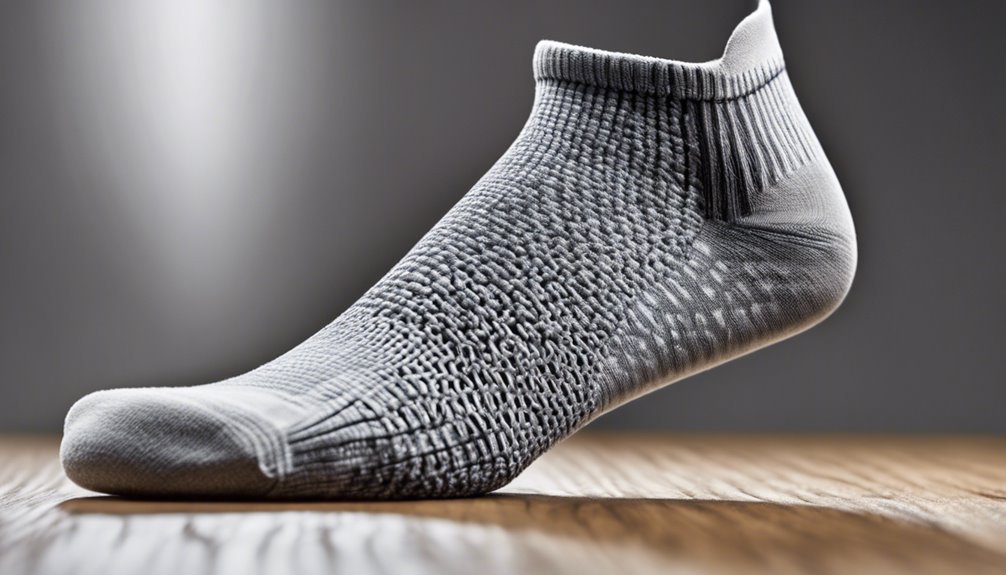
When it comes to preventing blisters, advanced materials play a critical role in enhancing comfort and protection. You'll find that state-of-the-art fabric technology is designed to minimize blister formation by focusing on key material properties. High-performance fibers are engineered to reduce friction between your skin and the sock, a primary factor in blister formation. These materials are meticulously crafted to offer a seamless fit, ensuring your freedom of movement isn't compromised while providing top-notch protection. By integrating innovative weaves and durable synthetics, manufacturers create fabrics that adapt to the contours of your feet, ensuring even pressure distribution. This precision-oriented approach not only prevents blisters but also enhances your overall experience, allowing you to focus on your journey without discomfort.
Moisture-Wicking Capabilities
Moisture management is a pivotal aspect of blister prevention in socks. You need breathable fabrics that efficiently wick moisture away from the skin, reducing friction and potential blister formation. These fabrics, such as merino wool, polyester blends, and nylon, are engineered for high performance. They allow for ideal moisture management, ensuring your feet remain dry and comfortable during intense activities.
| Material | Breathability | Moisture-Wicking Efficiency |
|---|---|---|
| Merino Wool | High | Excellent |
| Polyester Blends | Moderate | Good |
| Nylon | Moderate | Good |
Selecting the right fabric not only enhances comfort but also provides you with the freedom to move without the worry of blisters. With these technical advancements, you're equipped to tackle any challenge with confidence.
Temperature Regulation Features

While moisture management is a key component in blister prevention, the ability of socks to regulate temperature is just as important for overall foot comfort. You need socks that use advanced heat dissipation methods to guarantee your feet stay cool during intense activities. These methods include integrating materials like merino wool or synthetic fibers that transport heat away from the foot surface. Meanwhile, effective thermal insulation techniques are essential for maintaining warmth in colder environments. This balance between heat retention and dissipation is achieved through innovative fabric constructions that adapt to changing temperatures. By selecting socks designed with these features, you're embracing the freedom to perform at your best, no matter the conditions, ensuring both comfort and blister-free adventures.
Ergonomic Design and Fit
In the quest for ideal foot health and performance, ergonomic design and fit are essential elements of anti-blister socks. You need socks that conform precisely to your foot anatomy, ensuring optimal protection and comfort. Custom sizing is vital; it addresses the unique contours of your feet, minimizing friction and pressure points. This precision fit reduces the risk of blisters, letting you move freely and confidently.
Anti-blister socks employ advanced materials that adapt to individual foot shapes, offering a glove-like fit. The design strategically accommodates areas like the arch and heel, where proper alignment is key. By allowing your feet to breathe and move naturally, these socks enhance your freedom, empowering you to perform at your best without discomfort or restriction.
Innovations in Cushioning and Support
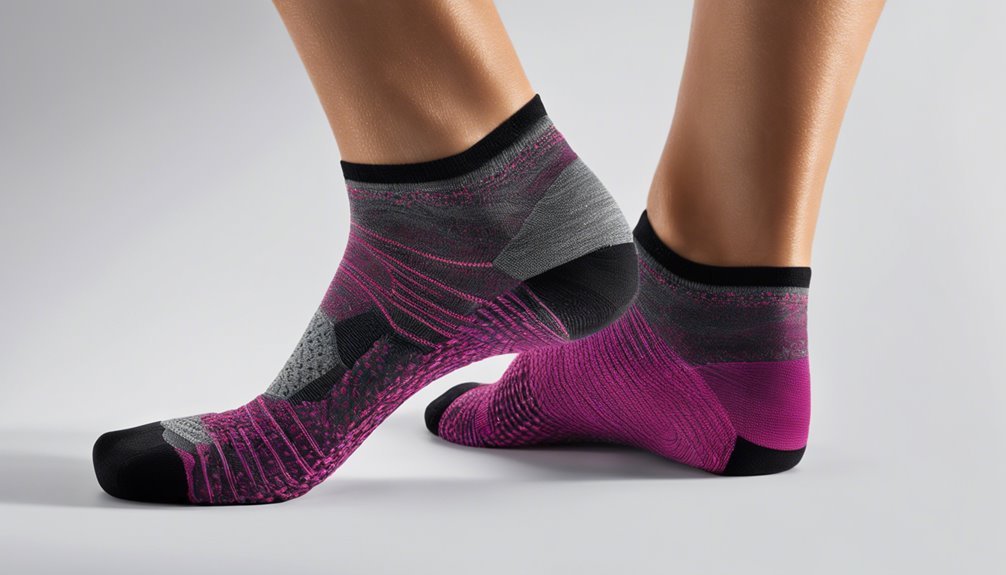
Building on the importance of ergonomic design and fit, the latest innovations in cushioning and support are redefining how anti-blister socks enhance performance. You'll find that advanced compression technology optimizes blood circulation, reducing fatigue and enhancing endurance. This is vital for those who value freedom in movement without compromising comfort. Additionally, state-of-the-art impact absorption materials, like high-density foams and gel inserts, form a responsive cushion layer, effectively dispersing pressure and minimizing friction. These materials are meticulously engineered to provide targeted support where it's needed most, ensuring your feet remain blister-free during intense activities. By focusing on these technological advancements, you're empowered to explore new terrains with confidence, knowing your gear is designed for peak efficiency and ultimate comfort.
Frequently Asked Questions
How Do Anti-Blister Socks Differ From Regular Sports Socks?
You'll notice anti-blister socks utilize advanced sock technology for blister prevention. Unlike regular sports socks, they're engineered with dual-layer materials reducing friction, moisture-wicking fibers, and seamless construction, offering precise comfort and freedom during intense physical activities.
Can Anti-Blister Socks Be Used for All Types of Footwear?
Imagine a chameleon adjusting to any environment. That's how anti-blister socks work across footwear types. Their advanced sock materials guarantee footwear compatibility, offering you freedom without friction, whether you're in hiking boots or running shoes.
Are There Any Specific Washing Instructions for Maintaining Anti-Blister Socks?
You'll want to follow specific washing techniques for anti-blister socks to guarantee fabric care. Use cold water, gentle cycle, and mild detergent. Avoid bleach and fabric softeners. Air-dry them to maintain their performance and durability.
What Is the Average Lifespan of a Pair of Anti-Blister Socks?
When considering sock durability in blister prevention, you'll find that anti-blister socks typically last about 6-12 months, depending on usage frequency and care. Their specialized materials guarantee peak performance, granting you freedom from discomfort during activities.
Do Anti-Blister Socks Come in Different Sizes and Styles for Varying Activities?
Yes, you'll find anti-blister socks designed with size variations and activity adaptations in mind. They're crafted using advanced materials, catering to specific needs for running, hiking, or casual wear, ensuring comfort without compromising your freedom.



